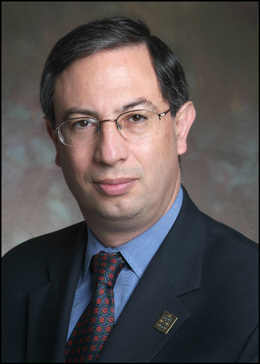
In a presentation at the 2013 Conference on Retroviruses and Opportunistic Infections (CROI), Carlos del Rio, MD, emphasized that funds for HIV/AIDS prevention should target programs with a substantial impact on HIV incidence, including testing; comprehensive prevention and care for infected individuals and their partners; condom distribution; and policies that link infected people to treatment.
Recent scientific breakthroughs in HIV prevention require us to re-examine how HIV prevention dollars are allocated, says Carlos del Rio, MD, co-director of the Emory Center for AIDS Research. This includes the realization that "treatment is prevention" after last year’s release of results from the HPTN052 clinical trial. Given that resources available are not unlimited, however, any funding should be carefully reviewed to see how much HIV prevention can be obtained in the most cost-effective way, says del Rio.
In a presentation at the 2013 Conference on Retroviruses and Opportunistic Infections (CROI), del Rio emphasized that HIV/AIDS prevention programs first need to target regions and demographics with the highest burden of HIV/AIDS, such as the southeastern U.S. and men-who-have-sex with men (MSM), particularly young black MSM.
"Funds also should be directed to proven interventions that effectively link and retain people in care," says del Rio. "And, despite its potential benefits, large-scale interventions with PrEP (pre-exposure prophylaxis) are not affordable given current prices and budget constraints."
The United States continues to have approximately 50,000 new HIV infections per year, with more than half occurring among MSM, particularly blacks. While the proportion of HIV-infected individuals who know their sero-status has increased, many are lost in the continuum of care, and currently only about 25 percent of those infected have an undetectable viral load, says del Rio. Thus, increasing the number of HIV-infected persons with an undetectable viral load should be a major goal of prevention programs.
The Centers for Disease Control and Prevention (CDC), using support of $621 million for its Division of HIV/AIDS Prevention, in FY11 launched its "high-impact prevention approach" to better align the burden of HIV infection and funding. In addition, the CDC initiated the Enhanced Comprehensive HIV Prevention Planning Project (ECHPP), a three-year HIV funding opportunity for 12 jurisdictions heavily impacted by the HIV epidemic including Atlanta.
ECHPP includes approaches to prevention that are expected to have a substantial impact on HIV incidence, including scaling up HIV testing; comprehensive prevention and care services for HIV-positive individuals and their partners; condom distribution; and efforts to align policies to optimize HIV linkage to care and treatment.
"Although the impact of these investments will not be known for several years, our prior experience with efforts to increase HIV testing helps predict their success," says del Rio. "Those efforts have led to a decrease in the number of HIV-infected people unaware of their status from approximately 33 percent in 2006 to less than 20 percent today."
"Because available resources are unlikely to increase in the near future, funding allocations must continue to target those programs likely to provide the largest prevention benefit," says del Rio, a professor of medicine in Emory University School of Medicine and Hubert Professor and Chair of the Hubert Department of Global Health in Emory’s Rollins School of Public Health.
